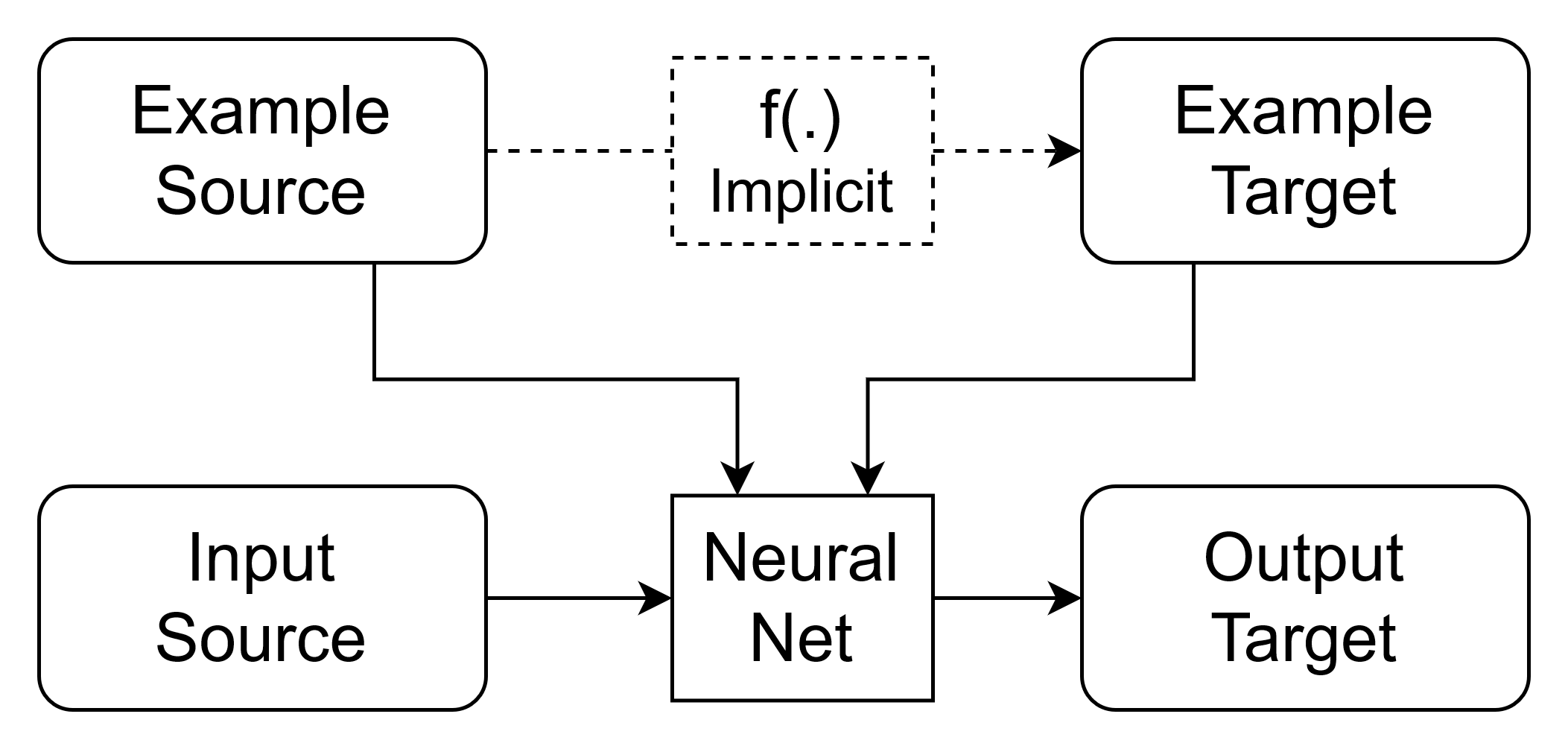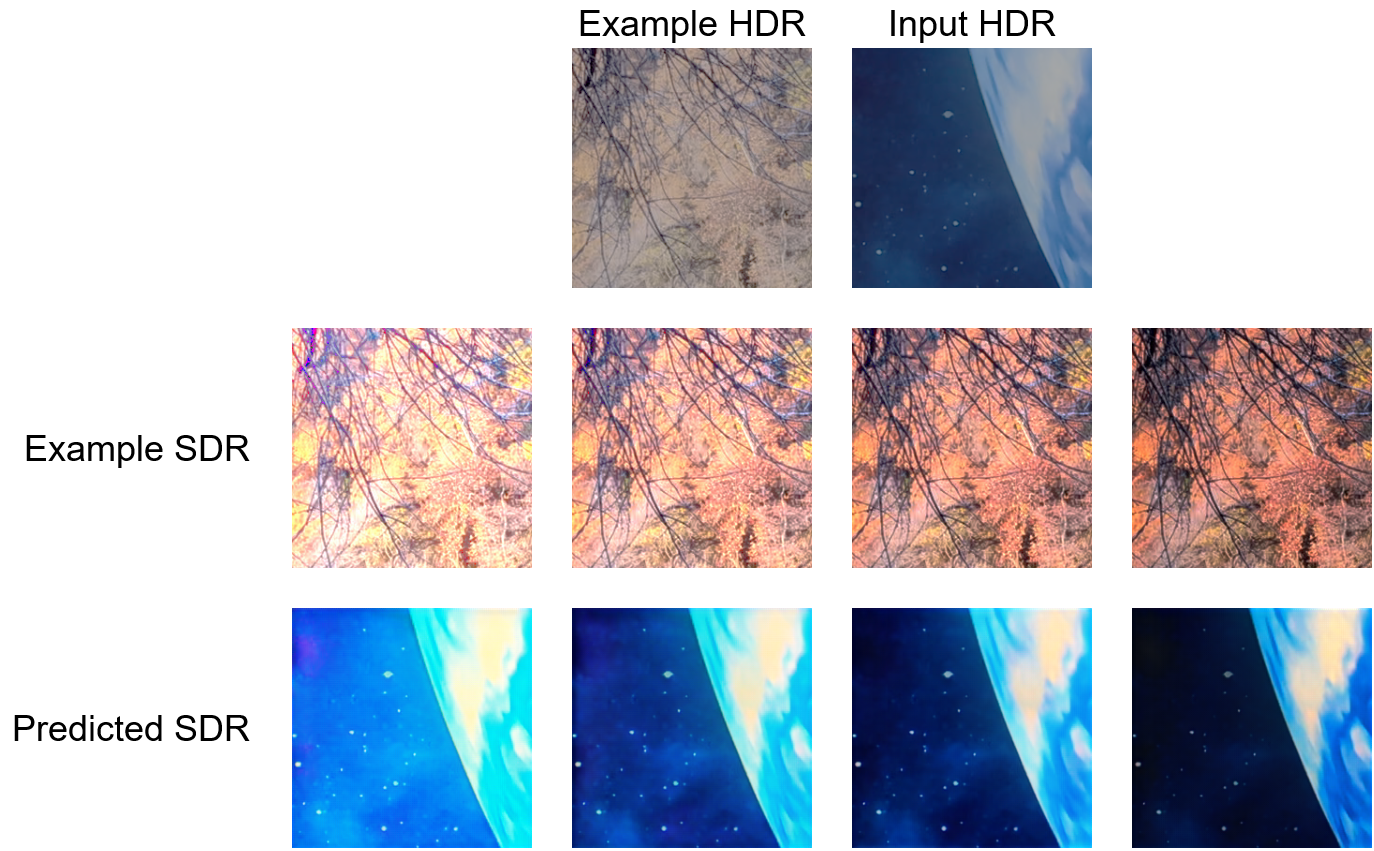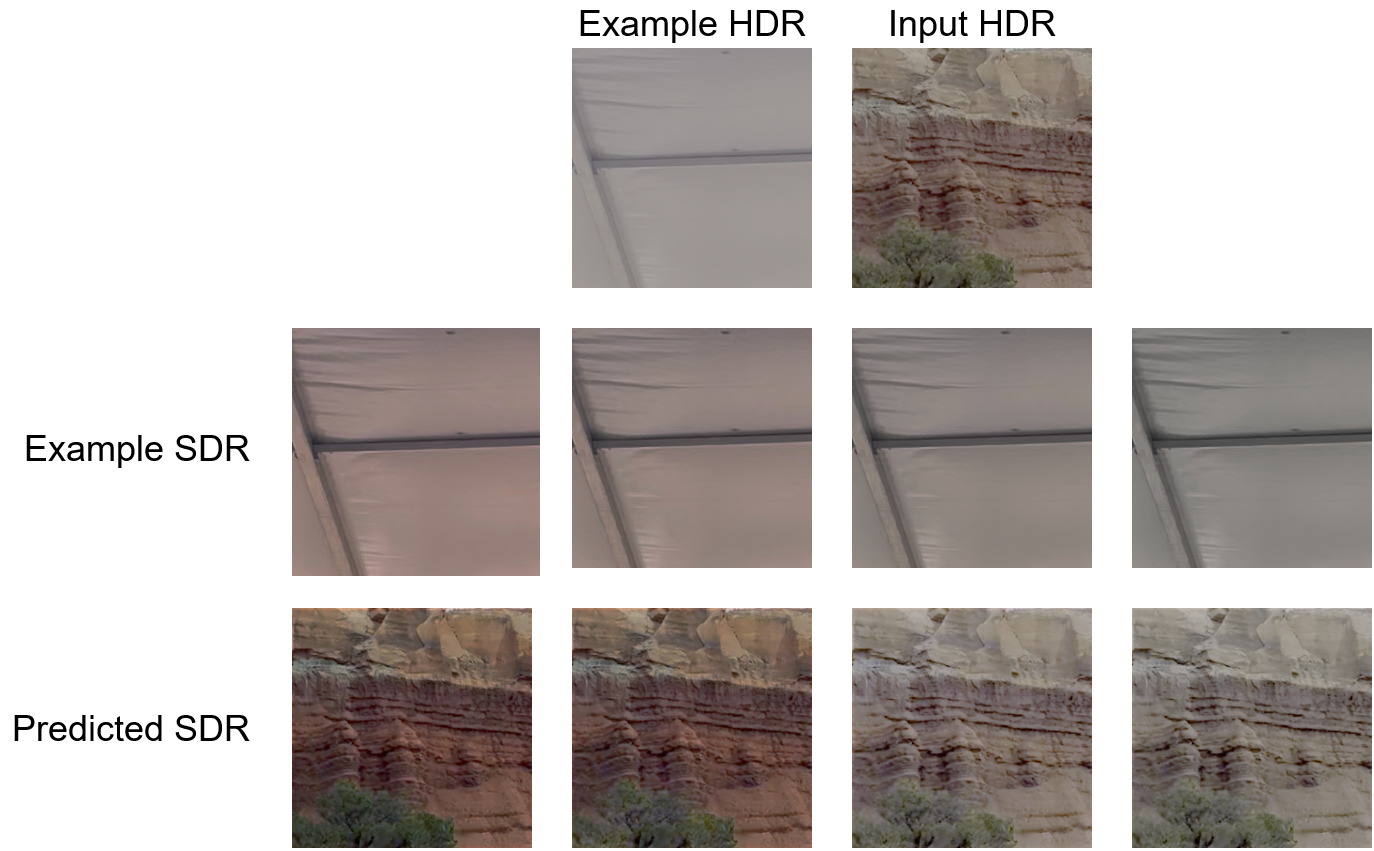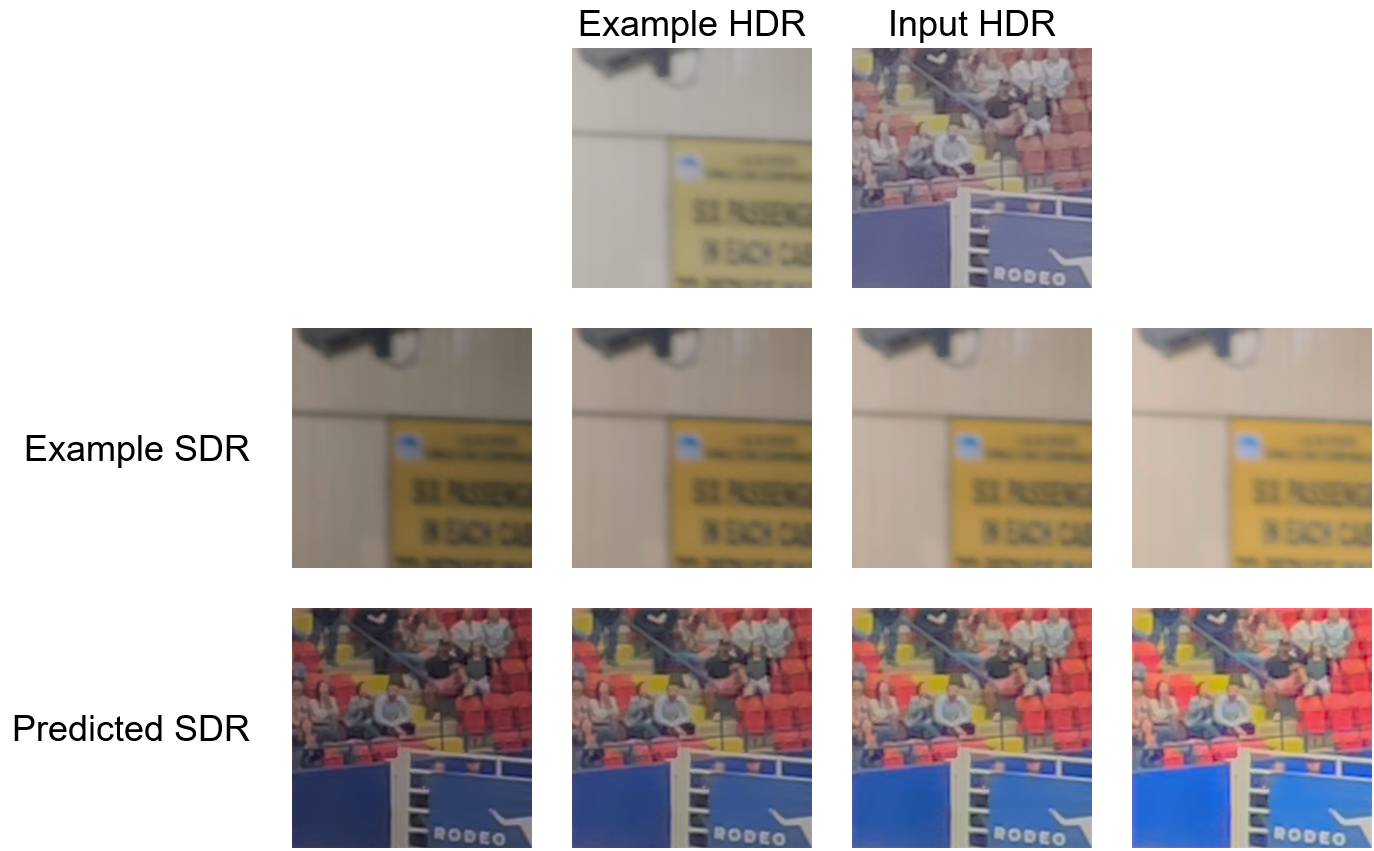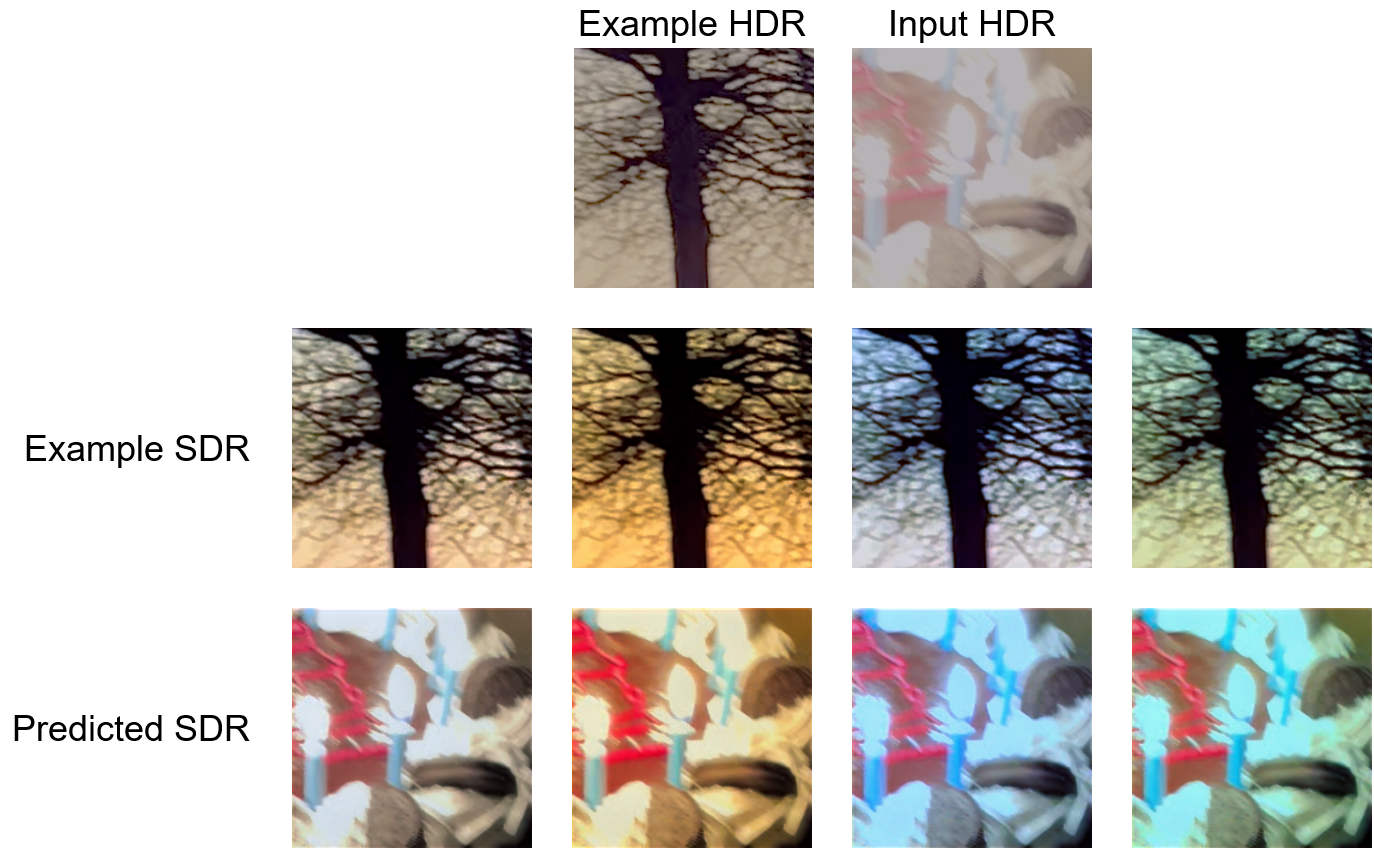This repository contains the official implementation of the DisQUE model proposed in the following paper.
- A. K. Venkataramanan, C. Stejerean, I. Katsavounidis, H. Tmar and A. C. Bovik, "Joint Quality Assessment and Example-Guided Image Processing by Disentangling Picture Appearance from Content," arXiv preprint 2024.
DisQUE is a multi-purpose deep network that uses disentangled representations to perform both tunable image processing/enhancement using the novel paradigm of example-guided image processing, and image quality prediction.
- A disentangled representation encoder that decomposes an image into its content ("what the image is showing") and appearance ("how it looks") components.
- A novel paradigm called example-guided image processing (EGIP) where the desired image processing behavior is specified at runtime using an example input-output pair. The relationship between the example images is inferred by the network and applied to the input image.
- A novel "appearance mixing" approach to improve the robustness of EGIP.
- A state-of-the-art self-supervised quality prediction model using the same DisQUE feature set.
Humans and algorithms approach image processing tasks in different ways. Humans typically use subjective judgements of the appearance of an image when editing it, say using tools like Adobe Photoshop, Da Vinci Resolve, or Instagram filters.
On the other hand, algorithms require specifying either a large number of human-generated paired examples, which may be cumbersome to obtain, or technical specifications of parameters such as contrast gain, non-linear gamma, etc. Moreover, as consumer preferences change over time and to personalize models to individual consumers, datasets (and trained models) and algorithm parameters must be updated periodically.
Example-Guided Image Processing bridges the gap between these two approaches by creating a model that uses a single example pair to define the desired image processing behavior. The inferred implicit relationship is then applied to the input image tobe processed.
Create and activate a virtual environment using
python3 -m virtualenv .venv
source .venv/bin/activate
Install all required dependencies
python3 -m pip install -r requirements.txt
Download pretrained model checkpoints and sample images
python3 download_data.py
To perform example-guided image processing, select an example input-output pair to specify the desired transformation, and the input to be processed. Then, run
python3 process_image_using_example.py --ckpt_path <path to trained model checkpoint> --source_range <pixel value range of source domain> --target_range <pixel value range of target domain> --example_source_path <source image of example pair> --example_target_path <target image of example pair> --input_source_path <input image in source domain to be processed> --output_target_path <path to save output image in target domain>
To reproduce the example-guided tone mapping results shown below, run
./process_all_sample_images.sh
To compute features from one video pair for either the FUNQUE(+) models or the baseline models, use the command
python3 extract_features.py --ref_video <path to reference video> --dis_video <path to distorted video> --ckpt_path <path to trained model checkpoint>
For more options, run
python3 extract_features.py --help
First, define a subjective dataset file compatible with QualityLIB. Then, run
python3 extract_features_from_dataset.py --dataset <path to dataset file> --ckpt_path <path to trained model checkpoint> --processes <number of parallel processes to use>
Note: This command computes features and saves the results to disk. It does not print any features. Saved features may be used for downstream tasks - example below
For more options, run
python3 extract_features_from_dataset.py --help
Examples of tunable tone mapping of high dynamic range (HDR) images are shown below.
DisQUE achieves SOTA quality prediction accuracy for both HDR tone mappinga and SDR images.
| Model | PCC | SROCC | RMSE |
|---|---|---|---|
| RcNet | 0.5985 | 0.5824 | 8.2417 |
| HIGRADE | 0.6682 | 0.6698 | 8.2619 |
| CONTRIQUE | 0.7360 | 0.7230 | 6.8476 |
| ReIQA | 0.7583 | 0.7812 | 7.2951 |
| Cut-FUNQUE | 0.7783 | 0.7781 | 6.4187 |
| MSML | 0.7883 | 0.7740 | 6.8090 |
| DisQUE | 0.8160 | 0.8215 | 6.3241 |
| Model | LIVE-IQA | CSIQ | TID2013 | KADID-10k |
|---|---|---|---|---|
| PSNR | 0.881 | 0.820 | 0.643 | 0.677 |
| BRISQUE | 0.939 | 0.746 | 0.604 | 0.528 |
| SSIM | 0.921 | 0.854 | 0.642 | 0.641 |
| FSIM | 0.964 | 0.934 | 0.852 | 0.854 |
| CORNIA | 0.947 | 0.678 | 0.678 | 0.516 |
| LPIPS | 0.932 | 0.884 | 0.673 | 0.721 |
| CONTRIQUE | 0.966 | 0.956 | 0.909 | 0.946 |
| ReIQA | 0.973 | 0.961 | 0.905 | 0.901 |
| DisQUE | 0.970 | 0.961 | 0.922 | 0.934 |
If you encounter any bugs or issues, or if you would like to make a contribution, please raise an Issue! Alternatively, you can contact me at [email protected] or [email protected].

